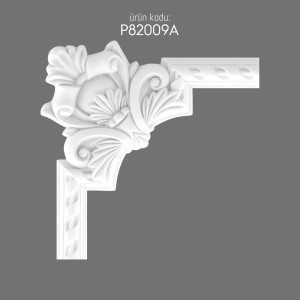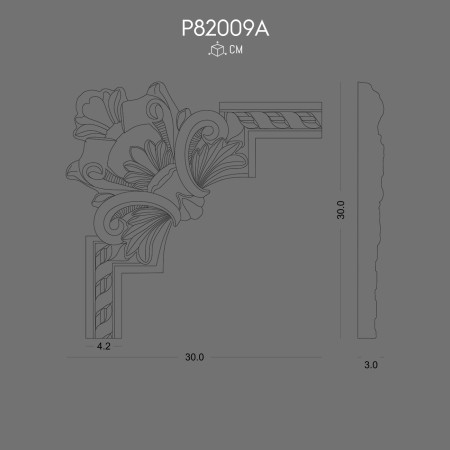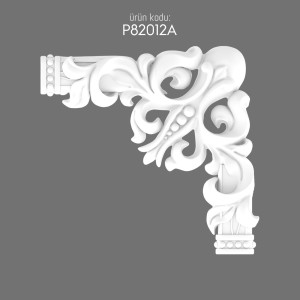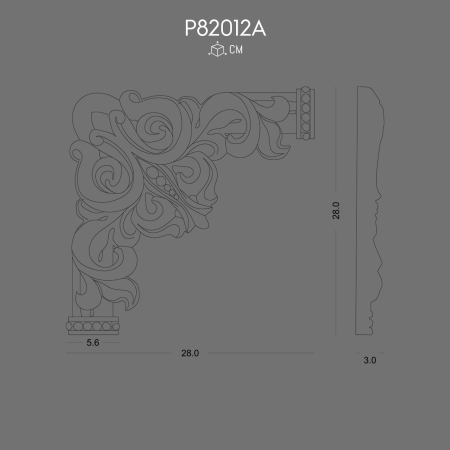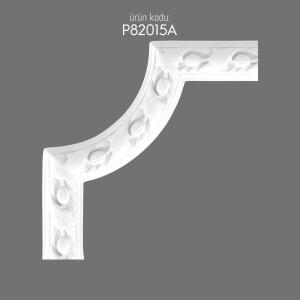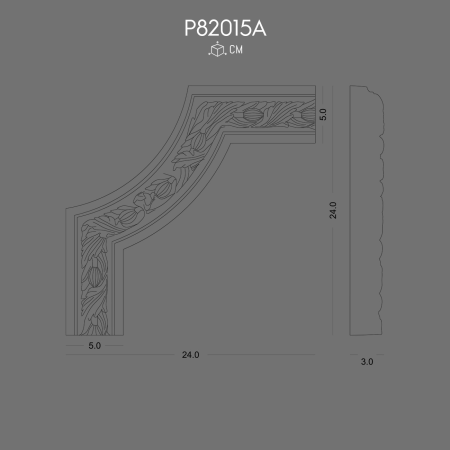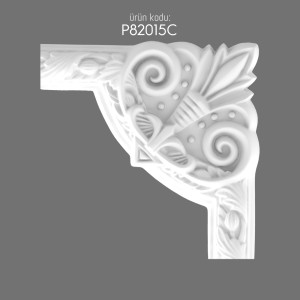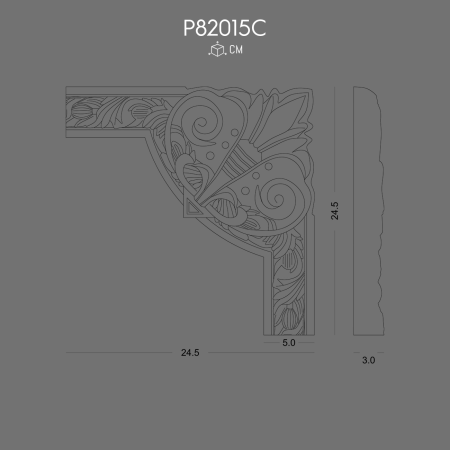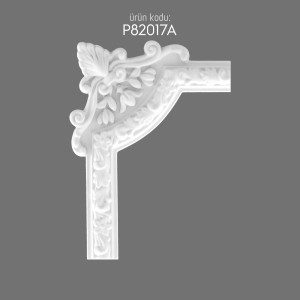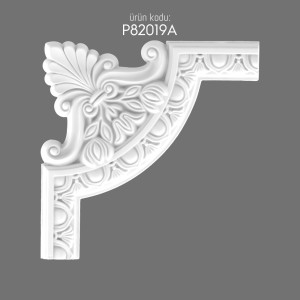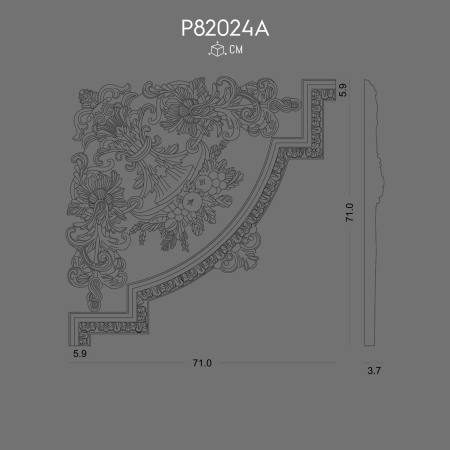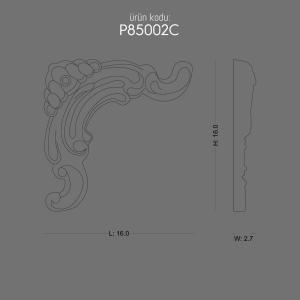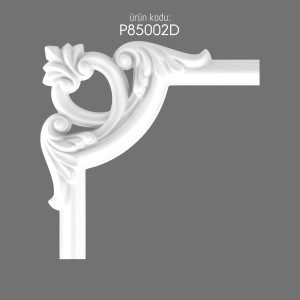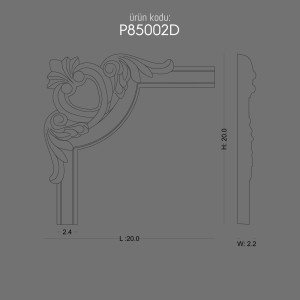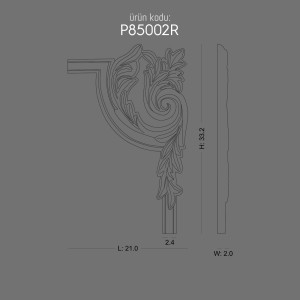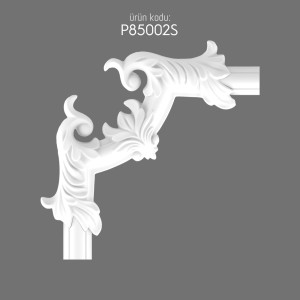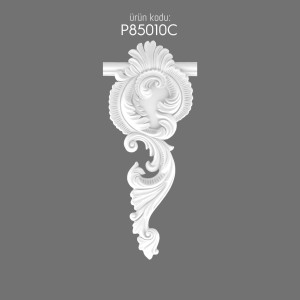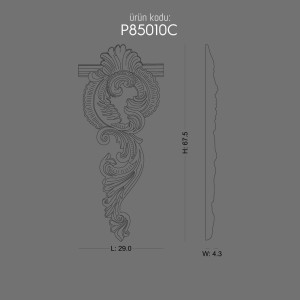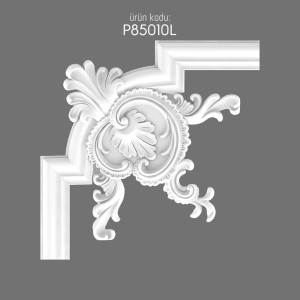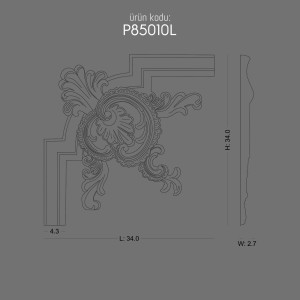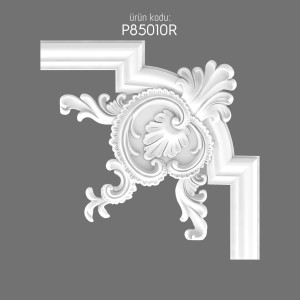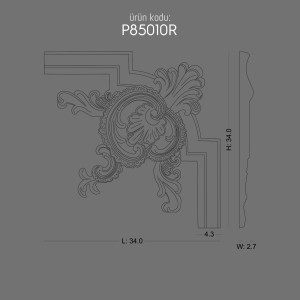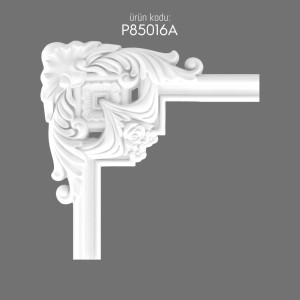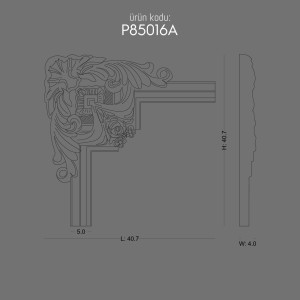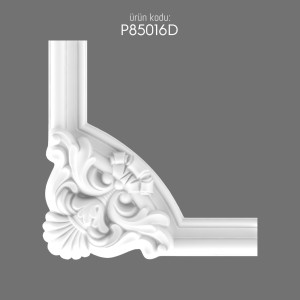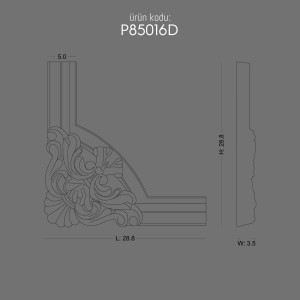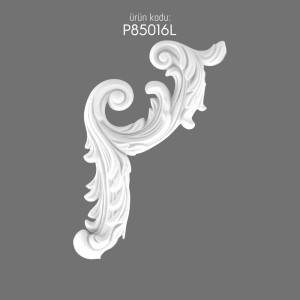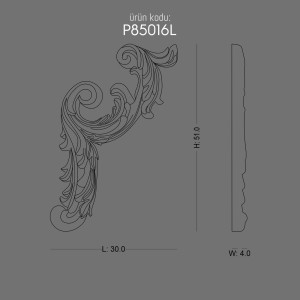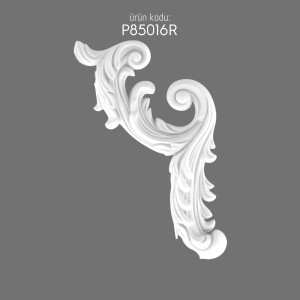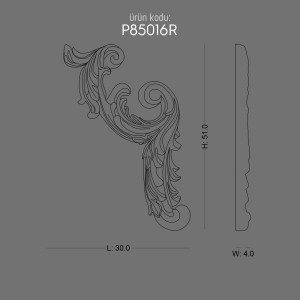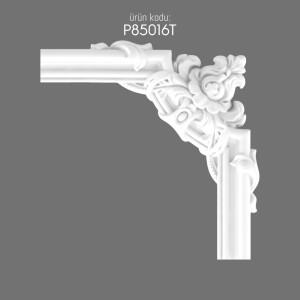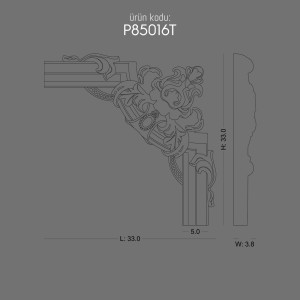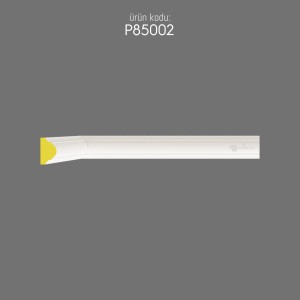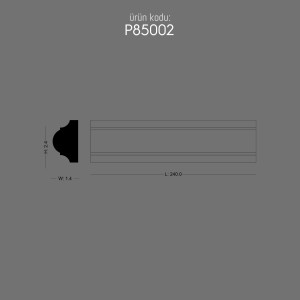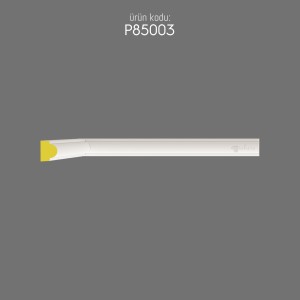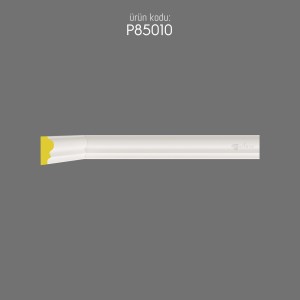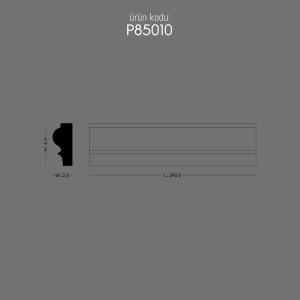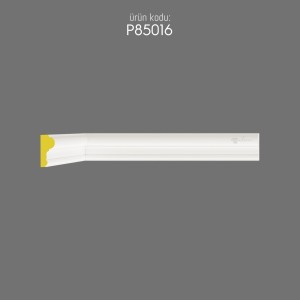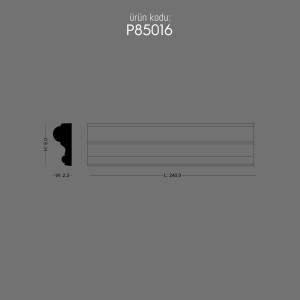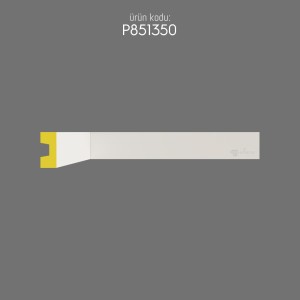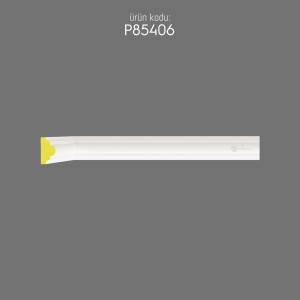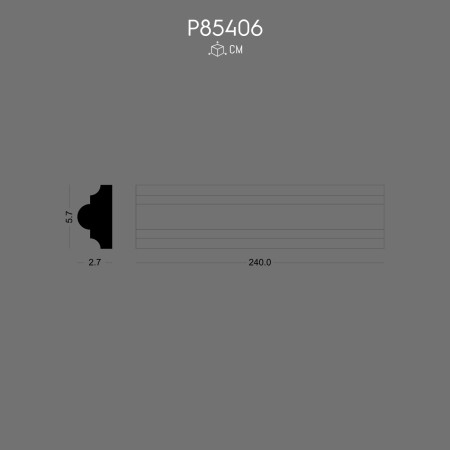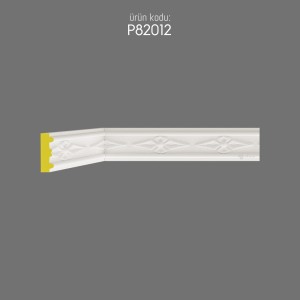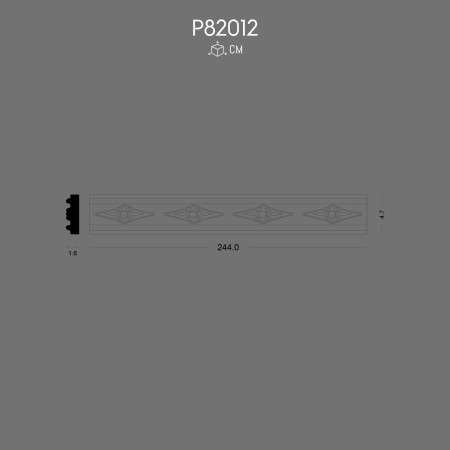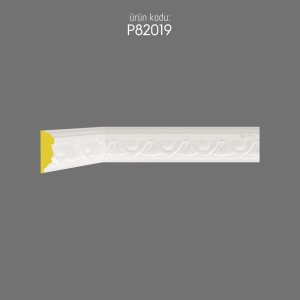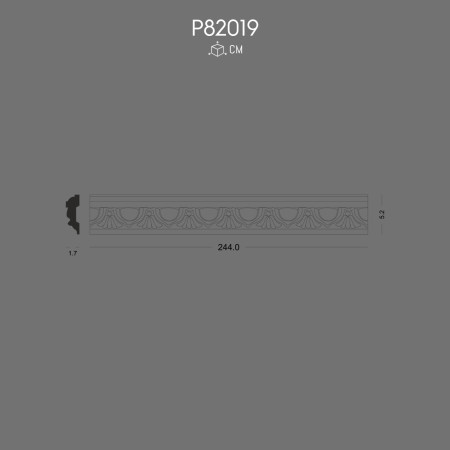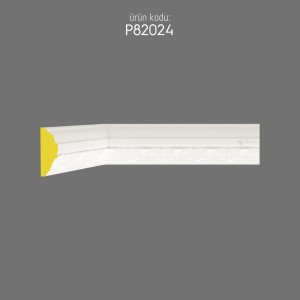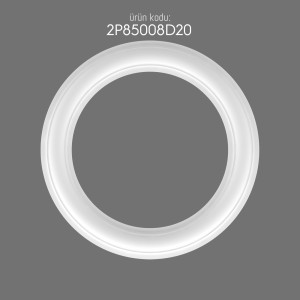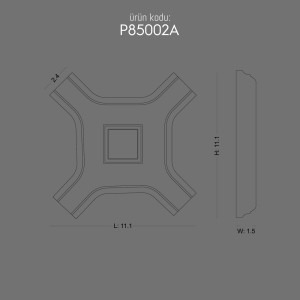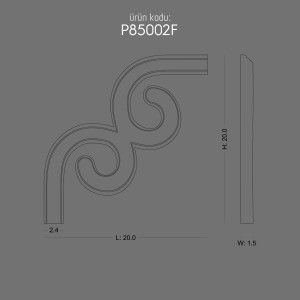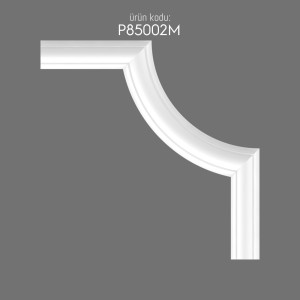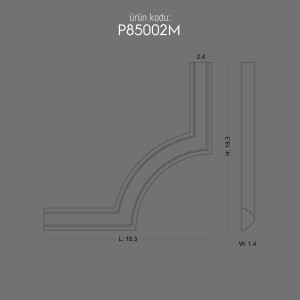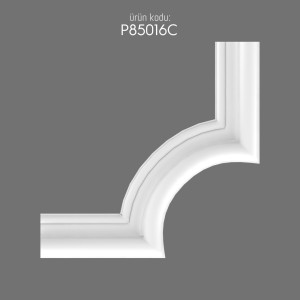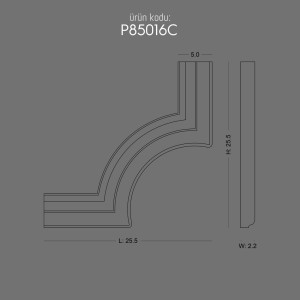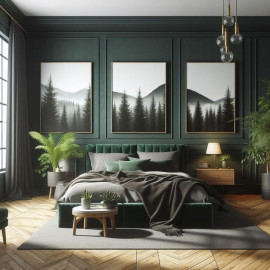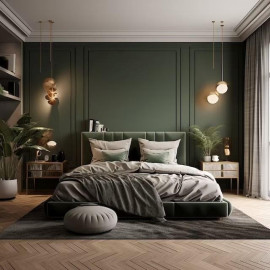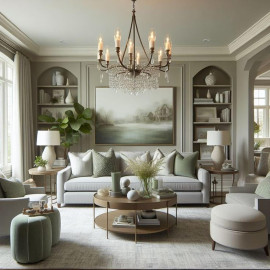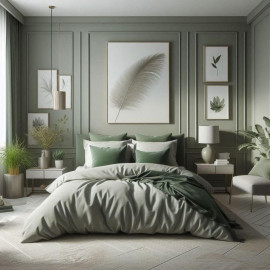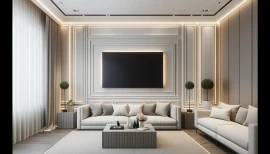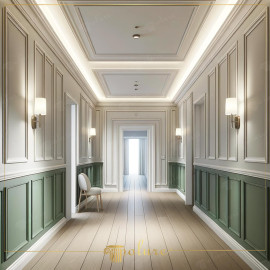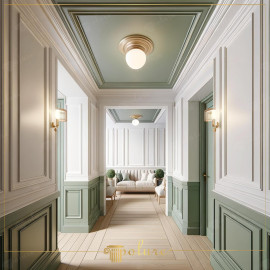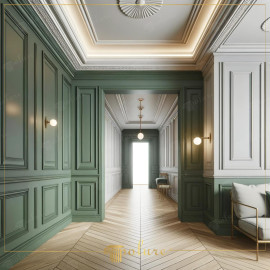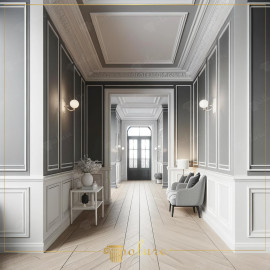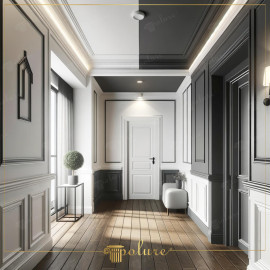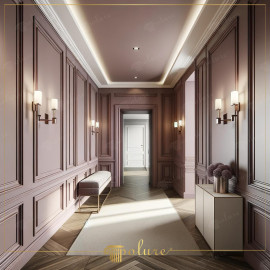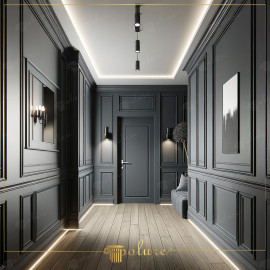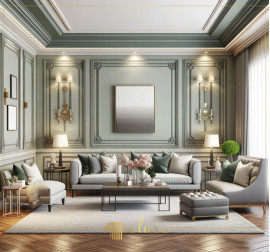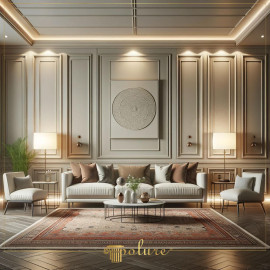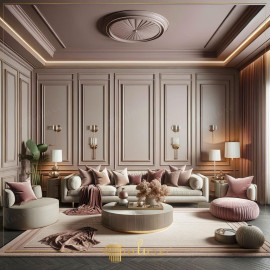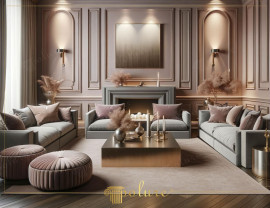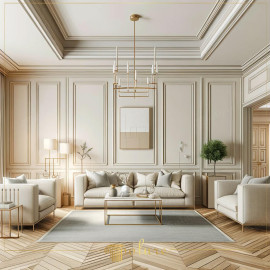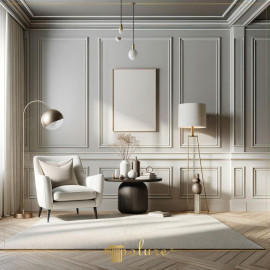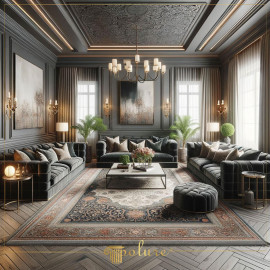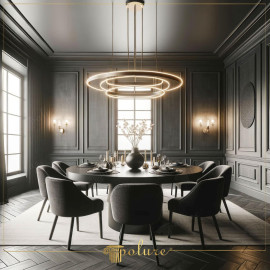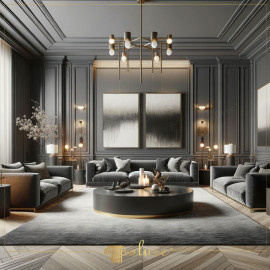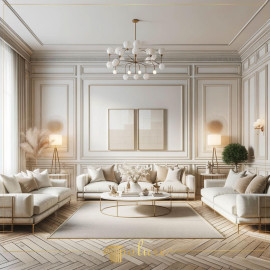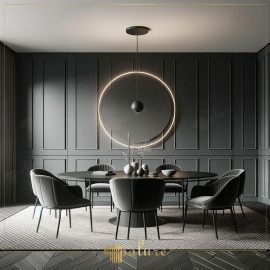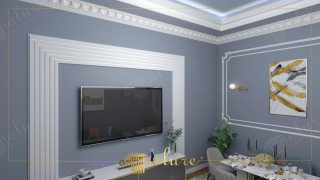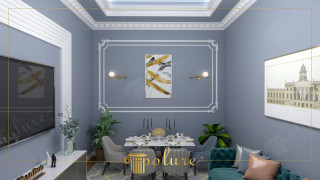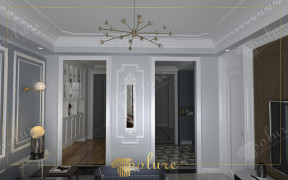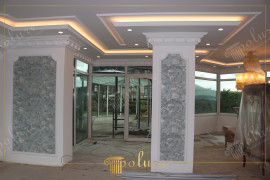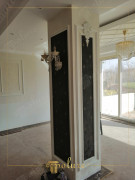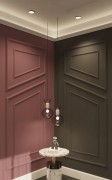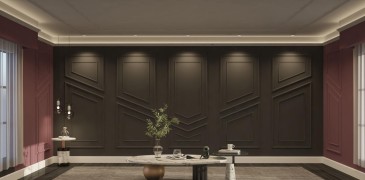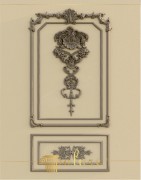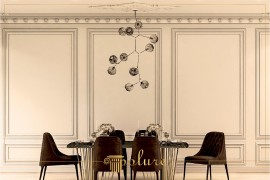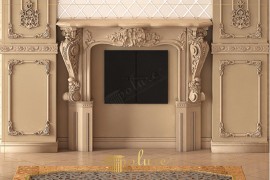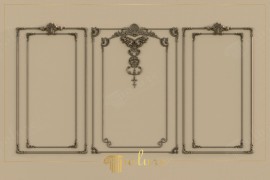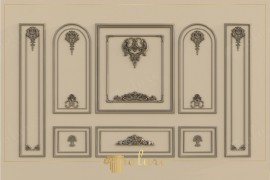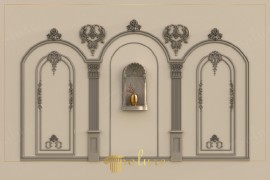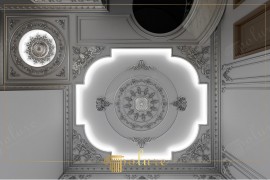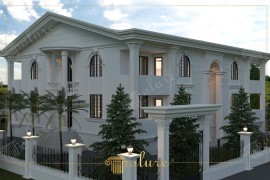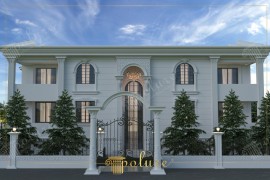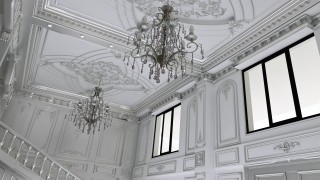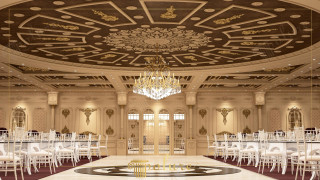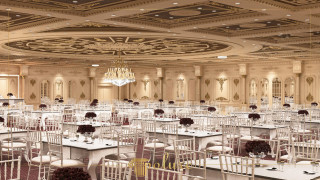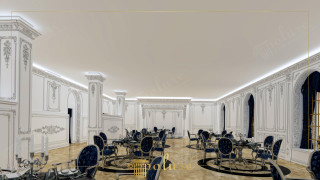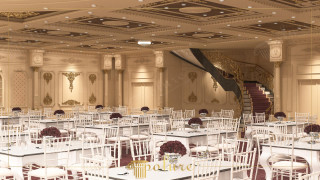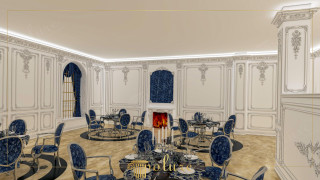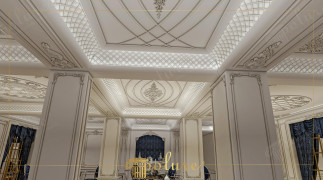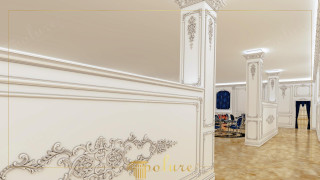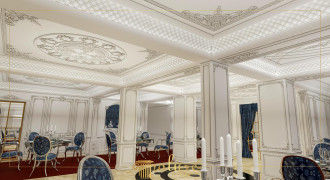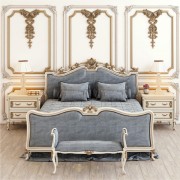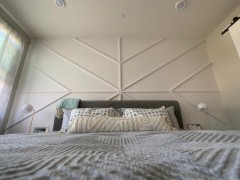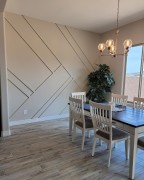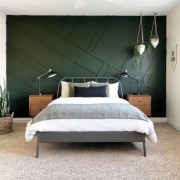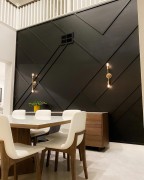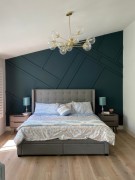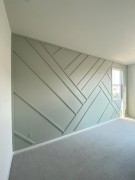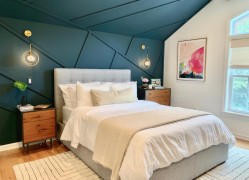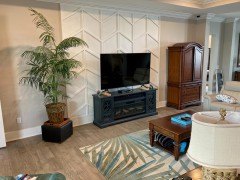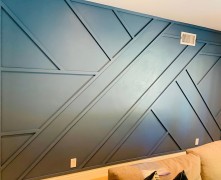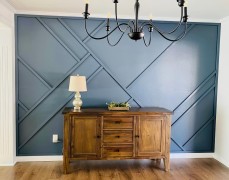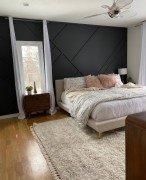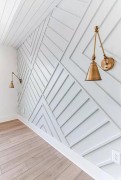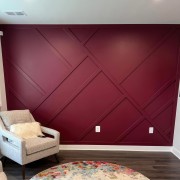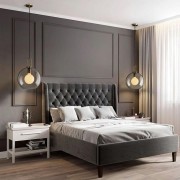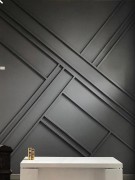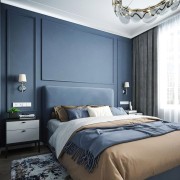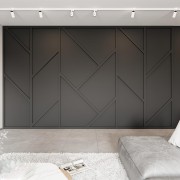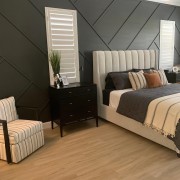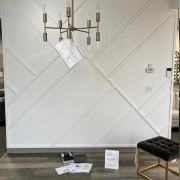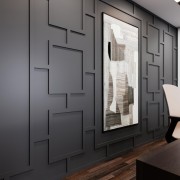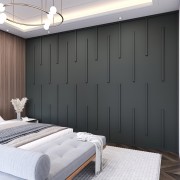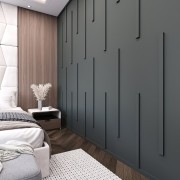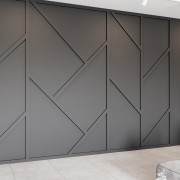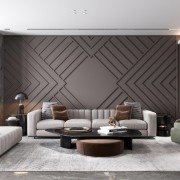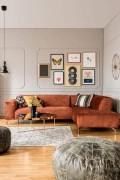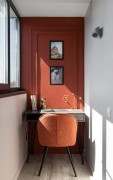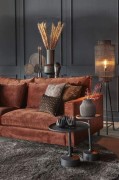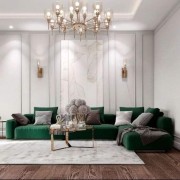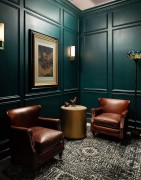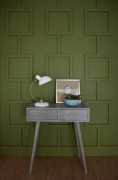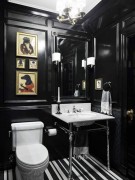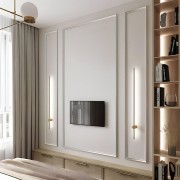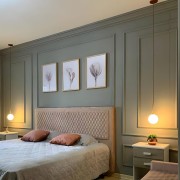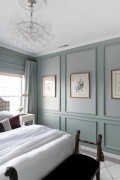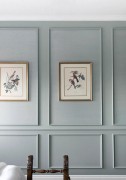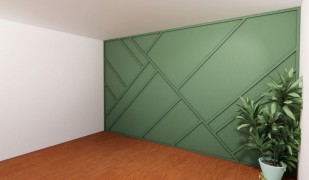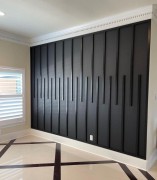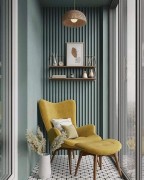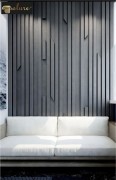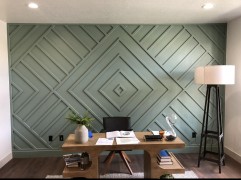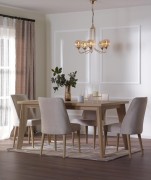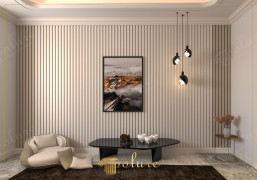Flat Moulding in Decoration
Flat Moulding is one of the most distinctive elements in polyurethane decoration. Known for being lightweight yet strong, it is especially suitable for both interior and exterior use. Its resistance to moisture and ability to be painted makes it a versatile decorative solution for different environments.
A designer once shared that after adding Flat Moulding to a hotel lobby, the space gained a sense of timeless charm without requiring a complete renovation. This small detail demonstrates how powerful such design elements can be.
- Durable and resistant structure
- Close hardness to natural wood
- Paintable smooth surfaces
Architectural Design and Technical Capabilities
Our company provides advanced design and production services for Flat Moulding. We keep a wide archive of both 2D and 3D models, allowing architects and designers to choose from or adapt existing forms. By using innovative technologies, we ensure that every product fits perfectly with design requirements.
- 3D scanning, 3D printer, CNC machining and high-pressure injection technology applied in manufacturing
- Paid site survey and measured drawings (röleve) service before design
- Paid preparation of detailed 2D and 3D drawings for projects
- Custom production on demand
- In-house tooling and polyurethane mould manufacturing
These steps allow us to deliver reliable, aesthetically refined, and technically precise results for every project.
Decoration Ideas with Flat Moulding
Flat Moulding can transform living spaces with simple but effective touches. Whether in a classical villa or a contemporary apartment, it introduces an elegant line that enhances walls and ceilings. It can be used to frame wall panels, support lighting effects, or add a sense of structure.
Once, a designer experimented with combining Flat Moulding with soft pastel wall colors in a dining room, achieving a warm and inviting ambiance that surprised even the client. This demonstrates how small details can create a remarkable effect.
History of Flat Moulding
The use of linear mouldings dates back to ancient structures where stone carvings decorated both sacred and residential buildings. Flat profiles were often found as framing details and later evolved with wooden and plaster techniques.
With the invention of polyurethane materials in the 20th century, Flat Moulding reached a new level of practicality. Unlike heavy stone or fragile plaster, polyurethane versions combined classical aesthetics with modern endurance. An anecdote tells of a historic mansion where Flat Moulding replacements in polyurethane preserved the original look while ensuring better longevity.
Application Areas of Flat Moulding
Flat Moulding finds a role in a wide range of spaces. From luxury residences to hospitality environments, its applications are vast.
- Homes and apartments
- Hotels and villas
- Mansions and palaces
- Wedding halls and event venues
- Ceilings, wall panels, and facades
It offers a practical solution for both indoor and outdoor architecture, balancing function and elegance.
Main Features of Flat Moulding
Flat Moulding stands out because of its technical and aesthetic features that make it a preferred decoration material.
- Polyurethane material, resistant to moisture
- Close hardness to natural wood
- Lightweight and easy installation
- Paintable and adaptable to different color schemes
- Durable both indoors and outdoors
Due to its versatility, architects and decorators frequently select it to complement diverse spaces.
Comparison with Other Materials
Compared to other decorative materials, Flat Moulding demonstrates strong advantages.
- Plaster: Heavier and more fragile, while polyurethane is lighter and more durable.
- Styrofoam (EPS): Cheaper but less durable, whereas polyurethane offers better performance.
- Duropolymer: Similar durability, but polyurethane provides smoother finishes.
- Precast concrete: Strong but heavy, polyurethane is easier to install.
- Fiber polyester: Strong but less paint-friendly; polyurethane combines strength and versatility.
Flat Moulding Prices
In terms of prices, Flat Moulding usually offers a balanced cost-to-performance ratio. While not always the lowest cost option, it achieves long-term savings by reducing maintenance and installation efforts. This makes it attractive for both residential and large-scale commercial projects.
Flat Moulding offers a refined decorative solution that balances tradition and modernity. With polyurethane durability, it is both lightweight and resistant to moisture, making it suitable for a wide range of projects. Its installation ease allows architects to save time while maintaining aesthetic quality. From classical mansions to wedding halls, Flat Moulding adds elegance without complexity. The material’s paintable surface allows endless customization, giving designers creative freedom. Unlike heavy plaster or fragile stone, it remains practical while beautiful. Its applications extend across interior and exterior surfaces, offering harmony with many architectural styles. Custom production further enhances its adaptability, especially for unique projects. Manufacturers utilize advanced processes like CNC and high-pressure injection for precise results. In everyday decoration, its minimal detail can redefine a space with sophistication. As a result, Flat Moulding continues to be a trusted solution in polyurethane decoration.
Flat Moulding
Flat Moulding refers to polyurethane decorative profiles that are widely used in both interior and exterior design. It is a durable, lightweight and paintable product with a hardness close to wood, but more resistant to water and moisture than natural wood. Flat Moulding models are preferred in homes, hotels, villas, mansions, palaces, and wedding halls. These products are also suitable for modern, classical, and minimal design approaches. Thanks to polyurethane production, they offer flexible design possibilities, long-lasting durability, and smooth finishes. They are appreciated within architectural projects for their ability to give walls, ceilings, and facades distinctive character while remaining practical. Flat Moulding serves as a functional and aesthetic solution, enhancing any space with a refined appearance. Its production, models, types, and manufacturer solutions in polyurethane decoration focus on technical precision and aesthetic harmony.
flat moulding, polyurethane moulding, polyurethane profiles, architectural moulding, wall moulding, ceiling moulding, decorative moulding, polyurethane decoration, interior moulding, exterior moulding, moulding models, moulding types, moulding prices, moulding production, moulding manufacturer
What is Polyurethane Moulding and How to Apply It

What is Polyurethane Moulding and How to Apply It
Polyurethane moulding is a decorative product widely used both indoors and outdoors, offering the durability and lightness of synthetic materials while imitating the hardness of wood. It is applied to walls, ceilings, doors, and windows, enriching spaces with refined detail. The main steps of application include measuring, cutting with precision, using strong adhesive, and finishing with paint.
In one restoration project of a historic mansion, polyurethane mouldings helped recreate lost wooden ornaments without the risk of decay, blending authenticity with practicality. This brief story shows that the material is not only functional but also carries cultural resonance.
- Durable, water and humidity resistant
- Lightweight yet strong, similar to wood
- Easy installation and painting
- Applicable in interior and exterior decoration
Architectural Design Perspective
In architectural practice, polyurethane mouldings support creative detail while maintaining structural efficiency. They provide versatile design opportunities for both modern and classical styles. Their adaptability in production technologies allows designers to customize solutions for unique spaces.
- 2D and 3D archive
- 3D scanning
- 3D printer
- CNC
- High-pressure injection
- Paid site survey and measurement
- Paid 2D and 3D drawings
- Custom production requests
- Polyurethane mould manufacturing
Decoration Ideas
Polyurethane mouldings are often chosen to emphasize elegance in living spaces. They can frame ceilings, divide walls, or accentuate doorways with minimal effort. In one designer’s project, simple mouldings completely transformed a modest apartment into a more refined environment.
Highlighting details like interior design and soft transitions strengthens the harmony of the overall aesthetic. Polyurethane mouldings thus serve both functional and decorative purposes simultaneously.
Historical Background
The use of mouldings dates back to ancient civilizations, where wooden and stone elements were carved to create hierarchy in architecture. Over time, as synthetic materials developed, polyurethane became a practical and sustainable alternative. It preserved the ornamental traditions of the past while simplifying application methods.
An anecdote from the early 20th century shows how decorative mouldings were key in restoring old palaces, symbolizing continuity in cultural heritage. The rise of modern materials like polyurethane helped revive these practices on a larger scale.
Areas of Use
Polyurethane mouldings are widely applied in residential and commercial spaces, offering both style and durability. Their water resistance makes them suitable for humid environments as well.
- Homes and apartments
- Hotels and villas
- Mansions and palaces
- Wedding halls and banquet venues
With flexibility in design, they fit into different types of architectural projects without limitation.
Main Features
Polyurethane mouldings combine elegance with practical performance. Their qualities make them one of the most versatile decorative elements on the market today.
- Lightweight yet durable
- Comparable hardness to wood
- Moisture and water resistant
- Paintable and easy to finish
- Simplified installation
Comparison with Other Materials
When compared with alternatives, polyurethane mouldings generally stand out for versatility and practicality. Traditional plaster options can be brittle, while styrofoam (EPS) lacks durability. Duropolymer offers some resilience, but less flexibility in design. Precast concrete is strong but heavy, limiting its usage indoors. Fiber polyester products are durable but may be less accessible.
Comparison of Prices
From a price-performance perspective, polyurethane presents a balance: more affordable than elaborate plasterwork or fiber polyester, yet higher in quality than EPS. Homeowners and designers find it an economical option that does not sacrifice appearance or endurance.
- Polyurethane: balanced cost and durability
- Plaster: elegant but fragile
- EPS: low cost but low strength
- Duropolymer: good performance, limited detailing
- Precast concrete: durable but heavy
- Fiber polyester: long-lasting, higher cost
Polyurethane mouldings offer a versatile solution for decorative applications in both classical and modern settings. They are lightweight yet durable, making them suitable for ceilings, walls, windows, and doors. Their paintable surface allows customization for unique interiors. Resistant to water and humidity, they adapt well to dynamic environments. Architects and interiors experts often select polyurethane moulding to combine beauty with functionality. The installation process is straightforward and quick compared to traditional methods. In large-scale projects like hotels or villas, they add sophistication without extra structural load. For mansions or palaces, they restore grandeur with low maintenance. They compare favorably to plaster or concrete due to efficiency and ease of use. Interior decorators value their balance of design flexibility and cost-effectiveness. Ultimately, What is Polyurethane Moulding and How to Apply It becomes essential knowledge for anyone seeking timeless and practical decoration solutions.
What is Polyurethane Moulding and How to Apply It
Polyurethane moulding is a decorative architectural element used in interiors and exteriors to enhance aesthetic appeal, bring character to spaces, and provide durable solutions. It is a lightweight yet strong material that resembles wood in hardness while being resistant to water, humidity, and decay. What is Polyurethane Moulding and How to Apply It is a frequently asked question in construction and design projects. The process generally involves preparing the surface, measuring and cutting the profiles, applying adhesive, and finishing with paint for a seamless look. This material can be used in homes, hotels, villas, mansions, palaces, wedding halls, and many more structures. Offering versatile applications, polyurethane moulding is preferred for ceilings, walls, window frames, and door trims. Its easy installation, resistance to temperature fluctuations, and long-lasting structure make it a superior alternative to traditional plaster or wood. Whether for modern or classical interiors, its elegant appearance and practical benefits provide architects, designers, and homeowners with a wide range of creative opportunities.
polyurethane moulding, polyurethane trim, decorative moulding, wall moulding, ceiling moulding, interior design moulding, architectural moulding, polyurethane profile, polyurethane panel, decorative trim, modern moulding, polyurethane decoration, classical moulding, lightweight moulding, what is polyurethane moulding and how to apply it
Information Gallery
List of detailed descriptions of images in the image gallery.





